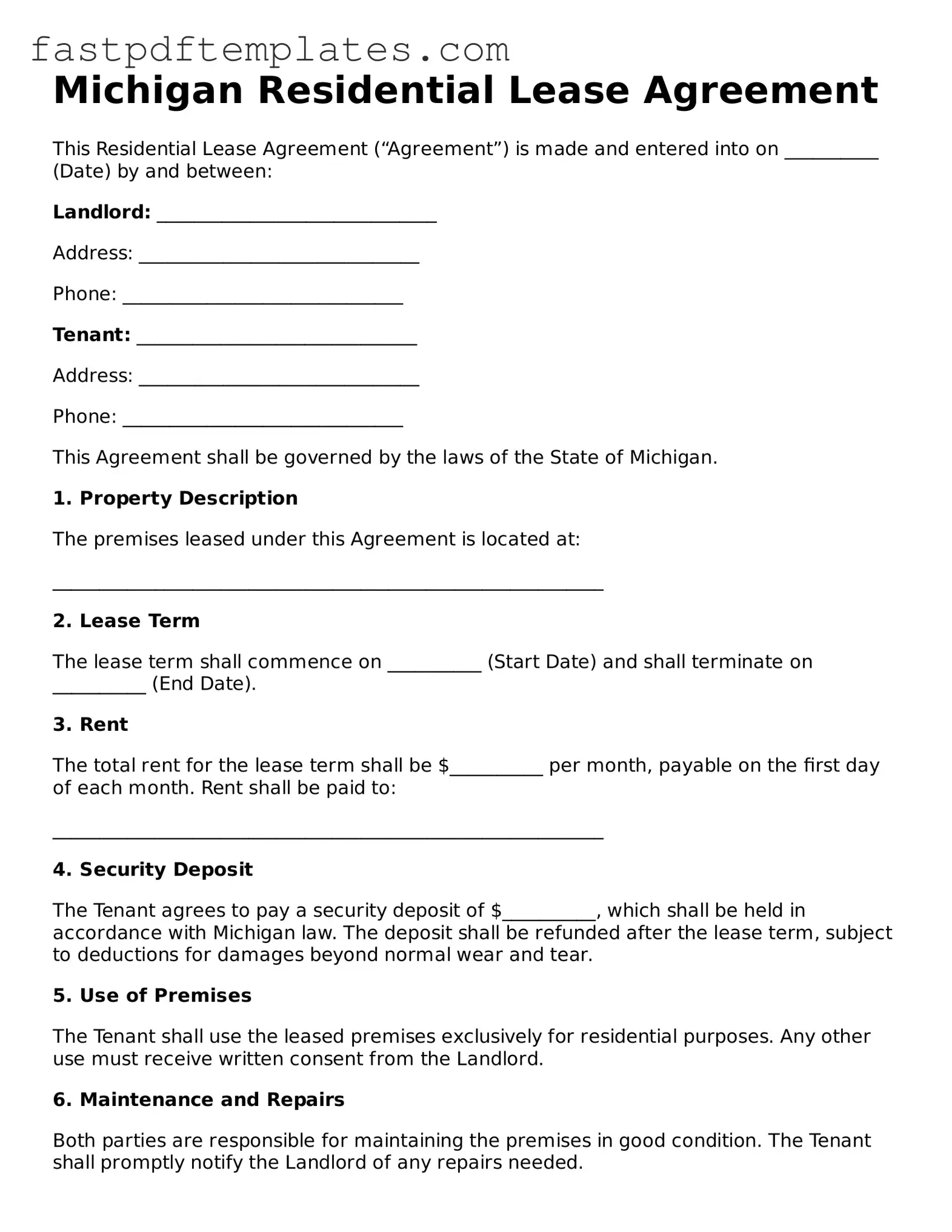Michigan Residential Lease Agreement
This Residential Lease Agreement (“Agreement”) is made and entered into on __________ (Date) by and between:
Landlord: ______________________________
Address: ______________________________
Phone: ______________________________
Tenant: ______________________________
Address: ______________________________
Phone: ______________________________
This Agreement shall be governed by the laws of the State of Michigan.
1. Property Description
The premises leased under this Agreement is located at:
___________________________________________________________
2. Lease Term
The lease term shall commence on __________ (Start Date) and shall terminate on __________ (End Date).
3. Rent
The total rent for the lease term shall be $__________ per month, payable on the first day of each month. Rent shall be paid to:
___________________________________________________________
4. Security Deposit
The Tenant agrees to pay a security deposit of $__________, which shall be held in accordance with Michigan law. The deposit shall be refunded after the lease term, subject to deductions for damages beyond normal wear and tear.
5. Use of Premises
The Tenant shall use the leased premises exclusively for residential purposes. Any other use must receive written consent from the Landlord.
6. Maintenance and Repairs
Both parties are responsible for maintaining the premises in good condition. The Tenant shall promptly notify the Landlord of any repairs needed.
7. Utilities
The Tenant agrees to pay for the following utilities:
- Electricity
- Gas
- Water
- Internet
8. Termination
This Agreement may be terminated early by mutual written agreement. A written notice of __________ days (Notice Period) must be provided by either party to the other.
9. Governing Law
This Agreement shall be governed by and construed in accordance with the laws of the State of Michigan.
10. Signatures
By signing below, both parties agree to the terms and conditions of this Lease Agreement:
Landlord Signature: _________________________ Date: __________
Tenant Signature: _________________________ Date: __________
